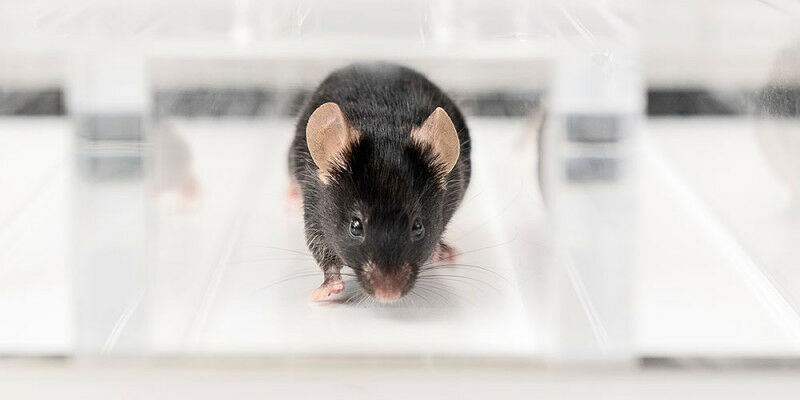博文
肌肉研究双赢:新方法带来更快的结果和更少的实验动物
||
肌肉研究双赢:新方法带来更快的结果和更少的实验动物
诸平

据瑞士巴塞尔大学(University of Basel)2023年10月12日提供的消息,瑞士与德国研究人员合作,正在实施3R即替代(Replacement)、减少(Reduction)、细化(Refinement)原则。现在无需使用大量小鼠即可有效研究肌肉纤维和神经肌肉疾病(neuromuscular diseases)。
为了研究肌肉疾病(muscle diseases),科学家们依靠小鼠作为模型生物。巴塞尔大学的研究人员现已开发出一种新方法,不仅比传统方法更快、更有效,而且还大大减少了研究肌纤维(muscle fibers)基因功能所需的实验动物数量。
研究人员使用小鼠作为模型生物来研究骨骼肌(skeletal muscle)的结构和功能、神经肌肉疾病和肌肉的衰老过程。科学家们意识到他们在使用动物方面的责任,并承诺在巴塞尔大学在动物辅助研究(Animal Research at the University of Basel)和畜牧业中严格执行所谓的3R原则——替代、减少、细化。
巴塞尔大学Biozentrum的马库斯·洛艾格教授(Prof. Dr. Markus Rüegg )的研究小组开发的新方法是朝着减少实验动物数量迈出的又一步。该方法还开辟了快速、经济且高效地同时研究肌纤维中多个基因甚至整个信号通路的新方法。该研究结果于2023年9月30日已在《自然通讯》(Nature Communications)杂志网站发表——Marco Thürkauf, Shuo Lin, Filippo Oliveri, Dirk Grimm, Randall J. Platt, Markus A. Rüegg. Fast, multiplexable and efficient somatic gene deletions in adult mouse skeletal muscle fibers using AAV-CRISPR/Cas9. Nature Communications, 2023, 14, Article number: 6116. DOI: 10.1038/s41467’023 -41769-7. Published: 30 September 2023. https://www.nature.com/articles/s41467-023-41769-7
参与此项研究的有来自巴塞尔大学(University of Basel, Basel, Switzerland)、瑞士巴塞尔苏黎世联邦理工学院(ETH Zurich, Basel, Switzerland);德国海德堡大学(Heidelberg University, Heidelberg, Germany)、德国感染研究中心(German Center for Infection Research简称DZIF)和德国心血管研究中心(German Center for Cardiovascular Research简称DZHK, Heidelberg, Germany)的研究人员。
研究肌纤维基因的困难(The difficulty of studying genes in muscle fibers)
研究肌肉中的基因功能具有挑战性。一方面,肌纤维非常大,孤立时非常脆弱。另一方面,在人类中,它们长达半米并包含数千个细胞核。为了改变和研究肌纤维中的基因功能,必须改变所有的肌纤维细胞核,这是很难实现的。
多年来,科学家们一直在使用CRISPR/Cas9方法来研究基因功能。该方法使用病毒将所谓的Cas9蛋白(Cas9 protein)和专门设计的引导RNA引入生物体,从而引入细胞核。Cas9蛋白在引导RNA识别的位点切割基因组DNA。Cas9蛋白和向导RNA的这种组合可以改变细胞中的基因功能。
CRISPR-Cas9方法可以拆分(The CRISPR-Cas9 method can be split up)
然而,为了确保病毒只改变肌肉纤维的基因表达,而不同时改变其他器官的基因表达,研究团队将CRISPR/Cas9方法与另一种方法结合起来:首先,研究人员成功培育了带有Cas9的小鼠蛋白质已经存在于他们的肌肉纤维中——但仅存在于那里。然后,他们用一种所谓的腺相关病毒(adeno-associated virus)将所需的向导RNA引入生物体,这种病毒会感染肌肉。
这种组合导致肌纤维中的引导RNA遇到Cas9蛋白,从而根据需要改变遗传物质。“该方法使我们能够确保只有肌肉纤维真正改变其遗传物质,”上述研究论文的第一作者马尔科· 瑟考夫(Marco Thürkauf)解释道。
更少的实验动物和更高效的结果(Fewer laboratory animals and more efficient results)
由于腺相关病毒还可以同时转运多个引导RNA,因此该团队现在可以使用该方法同时研究多个基因甚至整个信号通路。此外,该方法显著减少了所需实验动物的数量。
马尔科· 瑟考夫说:“所使用的所有动物都适合研究基因,并且不必饲养多年。这使得无需使用大量小鼠即可研究肌肉纤维和神经肌肉疾病。”
其他研究小组也已经表达了他们的兴趣。马库斯·洛艾格说:“我们的研究界中已经有几个感兴趣的团体想要使用我们的方法。这对于肌肉研究本身以及我们减少动物实验的目标来说都是一个巨大的收获。”
这项工作得到了瑞士国家科学基金会(Swiss National Science Foundation #189248)以及瑞士巴塞尔地方机构(the cantons of Basel-Stadt and Basel-Landschaft awarded)的资助或支持。
上述介绍,仅供参考。欲了解更多信息,敬请注意浏览原文或者相关报道。
Molecular screens comparing different disease states to identify candidate genes rely on the availability of fast, reliable and multiplexable systems to interrogate genes of interest. CRISPR/Cas9-based reverse genetics is a promising method to eventually achieve this. However, such methods are sorely lacking for multi-nucleated muscle fibers, since highly efficient nuclei editing is a requisite to robustly inactive candidate genes. Here, we couple Cre-mediated skeletal muscle fiber-specific Cas9 expression with myotropic adeno-associated virus-mediated sgRNA delivery to establish a system for highly effective somatic gene deletions in mice. Using well-characterized genes, we show that local or systemic inactivation of these genes copy the phenotype of traditional gene-knockout mouse models. Thus, this proof-of-principle study establishes a method to unravel the function of individual genes or entire signaling pathways in adult skeletal muscle fibers without the cumbersome requirement of generating knockout mice.
https://wap.sciencenet.cn/blog-212210-1405819.html
上一篇:迈向人工视觉的成功一步
下一篇:全球生育危机:男性不育及治疗行动计划